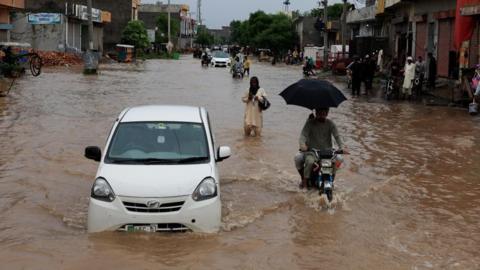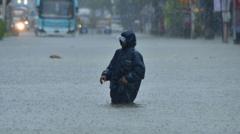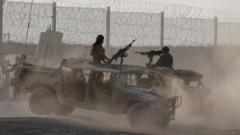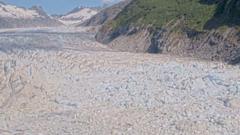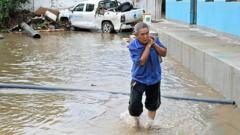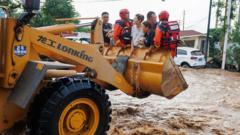In the early hours of Thursday, the popular tourist destination of Puerto Escondido, located in Oaxaca state, faced widespread power outages and communication failures after the hurricane wreaked havoc on infrastructure, including the destruction of two hospitals and severe flooding of streets. Thankfully, there have been no recorded fatalities or serious injuries so far. The storm subsequently weakened to a Category 1 system soon after landfall, although forecasters from the US National Hurricane Center (NHC) warned that dangerous flooding and high winds would continue as Erick moved northward.
The NHC cautioned that a "life-threatening" storm surge remains a risk, with Mexico's environment ministry alerting residents to potential waves reaching up to 10 meters (33 feet). In response, hundreds of military personnel were deployed to support local clean-up operations, particularly in Puerto Escondido, where many businesses faced major damage and nearby roads remained inundated.
Local merchant Luis Alberto Gil described the flooding as unprecedented, saying, "The water had never hit with this magnitude." The state-run electricity provider, CFE, reported that over 120,000 customers in Oaxaca lost power, with power restoration efforts allowing around a quarter of users to regain electricity by late morning.
To the north in Acapulco, a once-bustling resort town, residents are staying in and shops are shuttered as precautionary measures were taken prior to the storm's arrival. Many locals stocked up on essential supplies in anticipation of the hurricane, while warnings remained in place for hazardous flooding and mudslides across Oaxaca and neighboring Guerrero states.
Despite the fears associated with Erick, meteorologists predict that the storm will continue to weaken and may dissipate entirely in the coming hours. In an effort to ensure public safety, President Claudia Sheinbaum urged citizens to stay indoors and relocate to shelters if residing in vulnerable areas, with nearly 2,000 emergency shelters established in Chiapas, Guerrero, and Oaxaca ahead of the storm.
This response follows the devastation of Hurricane Otis in 2023, which resulted in over 50 fatalities in Acapulco alone, emphasizing the need for preparedness and safety in the face of natural disasters.
Are you in an area affected by Hurricane Erick? If it is safe, please share your experiences with us, and contact information if you are willing to talk directly with journalists.
The NHC cautioned that a "life-threatening" storm surge remains a risk, with Mexico's environment ministry alerting residents to potential waves reaching up to 10 meters (33 feet). In response, hundreds of military personnel were deployed to support local clean-up operations, particularly in Puerto Escondido, where many businesses faced major damage and nearby roads remained inundated.
Local merchant Luis Alberto Gil described the flooding as unprecedented, saying, "The water had never hit with this magnitude." The state-run electricity provider, CFE, reported that over 120,000 customers in Oaxaca lost power, with power restoration efforts allowing around a quarter of users to regain electricity by late morning.
To the north in Acapulco, a once-bustling resort town, residents are staying in and shops are shuttered as precautionary measures were taken prior to the storm's arrival. Many locals stocked up on essential supplies in anticipation of the hurricane, while warnings remained in place for hazardous flooding and mudslides across Oaxaca and neighboring Guerrero states.
Despite the fears associated with Erick, meteorologists predict that the storm will continue to weaken and may dissipate entirely in the coming hours. In an effort to ensure public safety, President Claudia Sheinbaum urged citizens to stay indoors and relocate to shelters if residing in vulnerable areas, with nearly 2,000 emergency shelters established in Chiapas, Guerrero, and Oaxaca ahead of the storm.
This response follows the devastation of Hurricane Otis in 2023, which resulted in over 50 fatalities in Acapulco alone, emphasizing the need for preparedness and safety in the face of natural disasters.
Are you in an area affected by Hurricane Erick? If it is safe, please share your experiences with us, and contact information if you are willing to talk directly with journalists.









